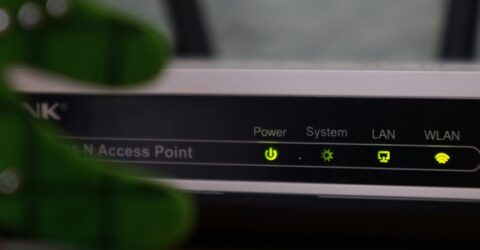What do the lights on my broadband router mean?
Broadband router lights aren’t just a flickering irritation – they’re conveying important information

We start this article with a question – where is your home broadband router?
There’s every chance it’s in a relatively low-profile setting, such as on the landing floor or in an under-stairs cupboard.
If so, it’s easy to miss flashing lights or warning symbols when they’re displayed on the device.
Consumers often only realise something is wrong with their broadband once the connection drops. Yet they might have been aware earlier, if they’d paid attention to their broadband router lights.
After all, routers can’t verbally request assistance, and they don’t beep or play musical chimes to highlight issues, either.
LEDs are their only method of communicating with us, so ignore broadband router lights at your peril…
The light fantastic
With numerous different broadband routers currently in use around the UK, each device manufacturer uses specific colour schemes or lighting configurations.
As such, we can’t detail what your specific make and model of router’s lights mean. However, we can provide a general overview.
Some routers only have one light, such as the ones provided by full fibre firm Grain.
A solitary window displays various colours, alongside two flash speeds and solid illumination. When there’s no light visible, the router is working normally.
Some routers have a panel of monochrome lights (typically white or green), which light up in sequence as the device powers up and begins to perform its various duties.
Others have a mixture of solid symbols and flashing lights covering different functions. This is typified by the latest generations of BT Home Hub routers.
There’s a power light which might be green or flashing green (booting up), red (offline), orange (identifying a problem) or blue (working normally).
A separate broadband indicator may be orange, red or flashing, respectively indicating that your account is inactive, using incorrect login credentials or experiencing a fault.
Power to the people
Where routers feature multiple lights, they tend to cover the following areas – power supply, internet connection, broadband distribution and whole-home WiFi coverage.
As a rule of thumb, green or white lights indicate something positive, whereas orange or red lights highlight a problem.
A flashing light usually indicates something is in progress – a device powering up, a connection being established (potentially after a dropout), and so forth.
Lights may begin to flash as a main router attempts to connect a range extender, for instance, or as firmware is being downloaded and installed.
There might be explanatory symbols or words beside your broadband router lights, while an online search usually reveals the instruction booklet for your model if the paper copy is missing.
Before ringing your ISP to say your computer won’t connect to the internet, check your router for flashing lights which might be attempting to tell you what the problem is.
The ISP’s technical support team will want to know what those lights are reporting, so ensure the router isn’t buried alive within your home…






